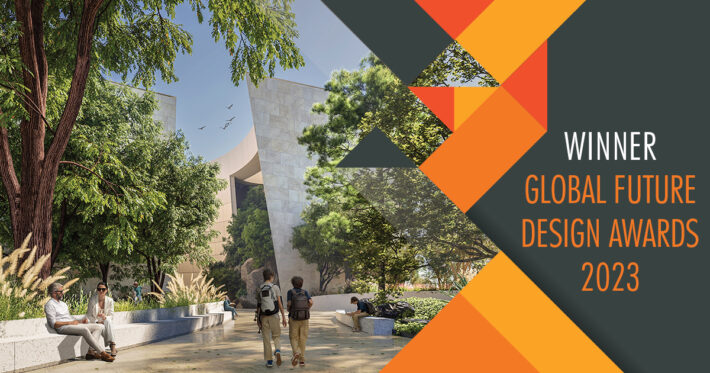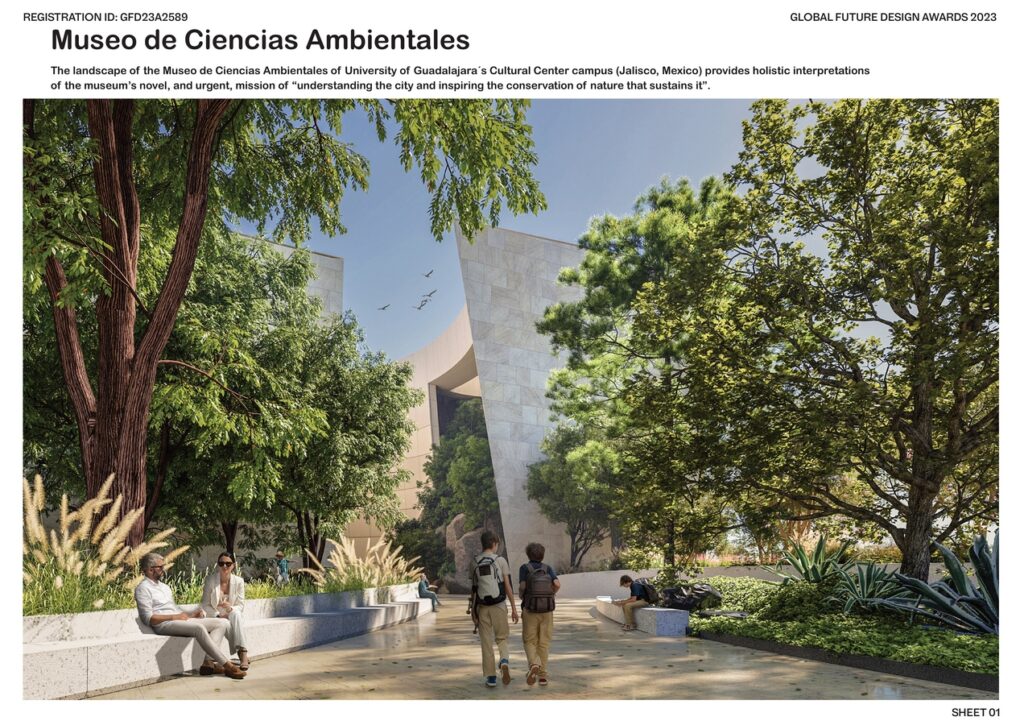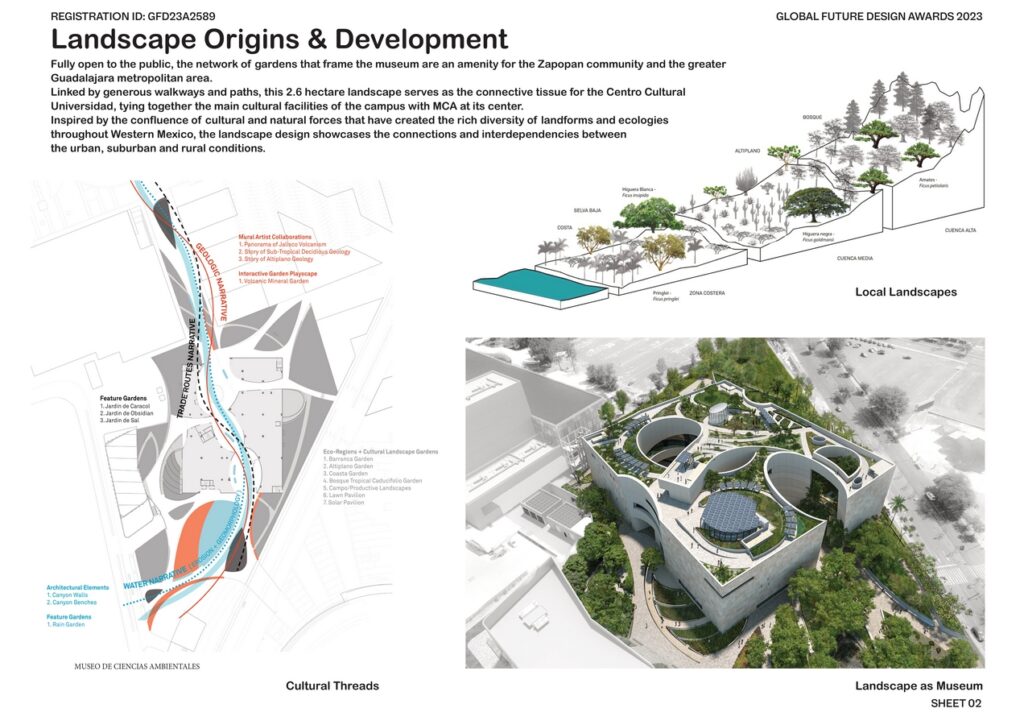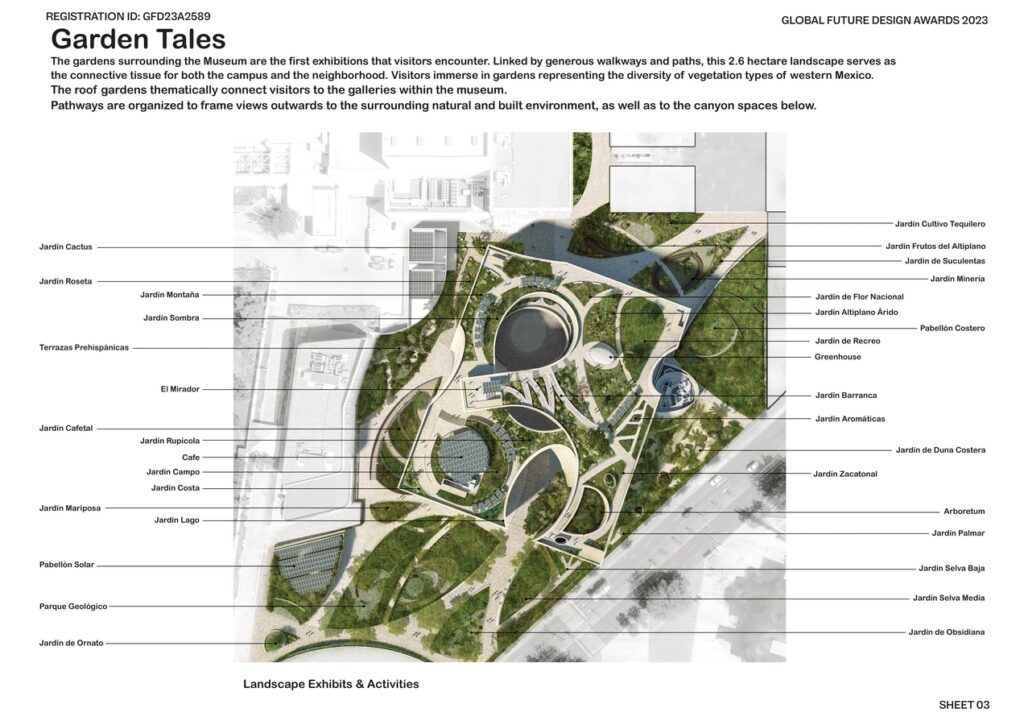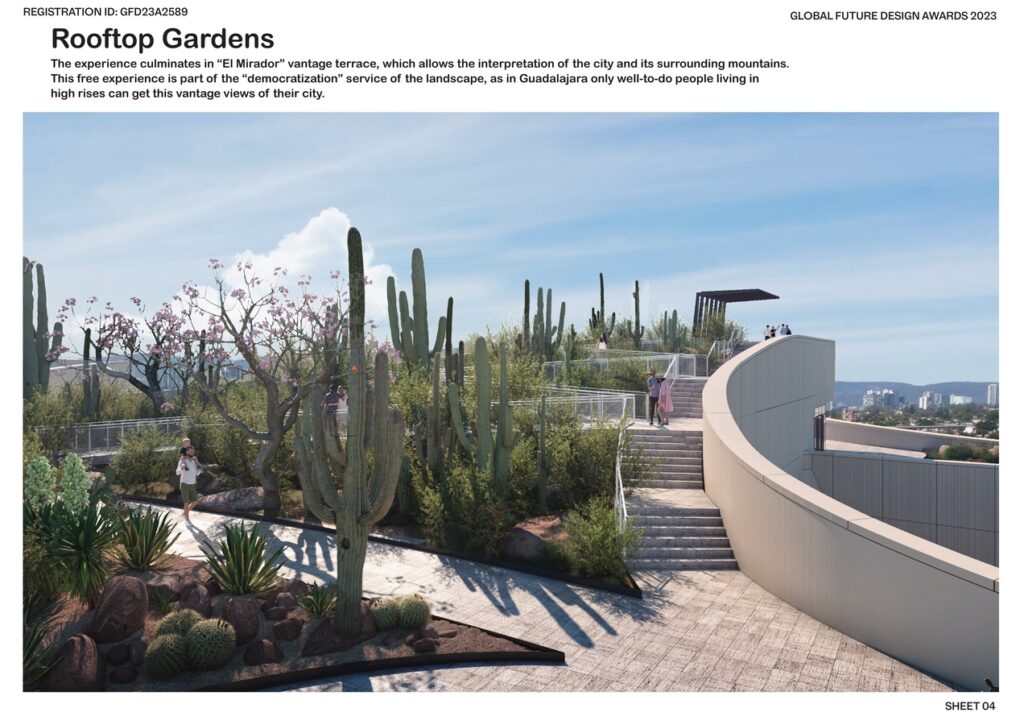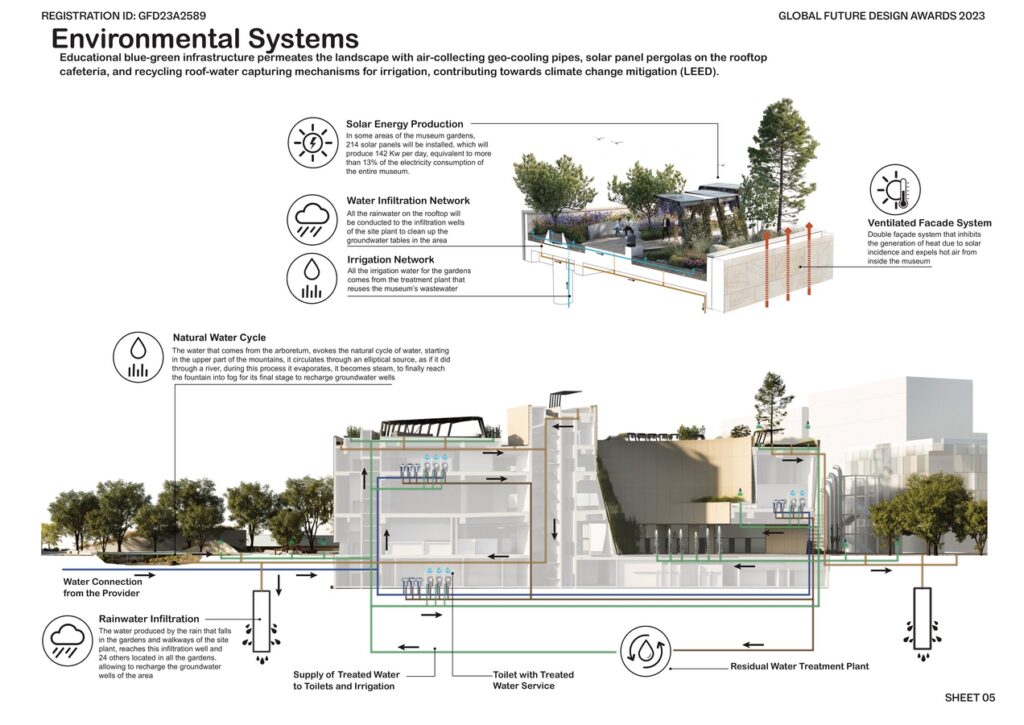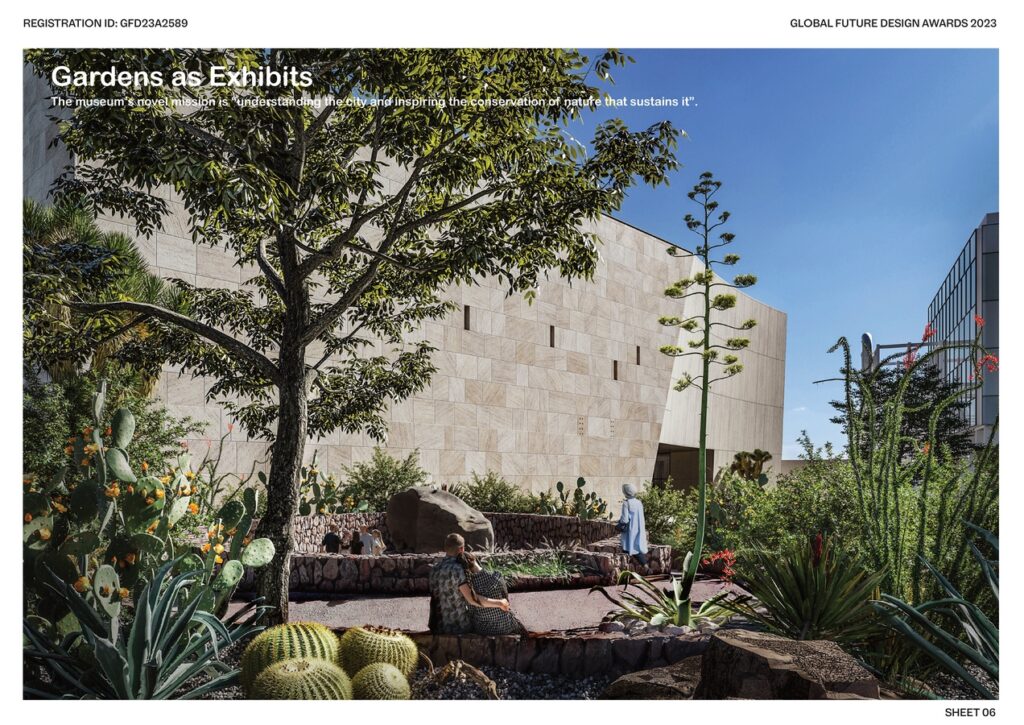The landscape of the Museo de Ciencias Ambientales of University of Guadalajara´s Cultural Center campus (Jalisco, Mexico) provides holistic interpretations of the museum’s novel mission of “understanding the city and inspiring the conservation of nature that sustains it”.
Global Future Design Awards 2024: Entries Open!
Take your work to the next level. Register Now…
Gold 🏆 Winner
Global Future Design Awards 2023
Museo de Ciencias Ambientales
Public Landscape Architecture (Concept)
Firm
Snøhetta
Architect/Designer
Jackie Martinez
Design Team
University of Guadalajara, Snøhetta, Met Studio, Thinc Design, JSa, Zap, Metroarquitectura, Monolito
Project Location
Guadalajara, Jalisco, Mexico
Country
United States
Photographer/Copyright
©Monolito
Social Media Handles
Facebook: N/A
YouTube: N/A
Instagram: N/A
Twitter: N/A
Website URL
www.snohetta.com
The 2.6-hectare outdoor gardens are the Museum’s first exhibits. Generous walkways connect the large library and auditorium buildings at opposite ends of the campus. Multiple entrances allow access permeability and pedestrian flows through the central “canyon” of the Museum building, evoking the deep Santiago River ravine, which delimits the Guadalajara Metropolitan Area. Here, visitors are immersed in the biodiversity of western Mexico. Over 450 species of native plants of Pine-oak, Tropical, Coastal, Arid, Wetland, and Agricultural vegetation create a rich sensory experience.
Inspired by the confluence of cultural and natural forces that have created the rich diversity of landforms and local land-uses, the landscape design displays the connections and interdependencies within the so-called “urban-rural divide.” The materials and planting palette selected address three main thematic threads which are braided together along the main garden paths: biocultural agricultural processes, water, and nature-based commerce. Entering from the north, visitors encounter the Salt and Mineral Gardens, which are followed by the Obsidian and Seashell Gardens. These trade elements linked European, Asian, American, and local Indigenous cultures. The variety of hardscape surface materials, including stone, gravel, sand, shells, and textured concrete, are selected for both durability and resonance with the vernacular landscapes, in designs that, although novel, are rooted in the local sense of place. The thematic gardens, paths, and landscaping activate spaces for education, relaxation, recreation, and community gatherings.
The story of water erosion, told in the walls of the building canyon, extends into the museum gardens where seating and retaining walls appear to be carved remnants of a larger form. Water in its different states, appears throughout; from an evaporating scrim of water that alternates with an elliptical active fountain, to the waterfall within the misty cloud forest arboretum, to the raingardens punctuated by 24 recharging groundwater wells. Additional blue/green infrastructure permeates the landscape with air-collecting geo-cooling pipes, solar panel pergolas on the rooftop cafeteria, and recycling roof-water capturing mechanisms for irrigation, all of which contribute towards climate change mitigation (LEED).
Evoking the four-thousand-meter altitudinal gradient of Western Mexico, the ground-level gardens “climb” to the rooftop by way of a “cloud forest arboretum” that contains a 25m waterfall that emerges from the building. The roof gardens thematically connect visitors to the galleries within the museum. Pathways are organized to frame views outward to the surrounding natural and built environment, as well as to the canyon spaces below. The experience culminates in the “El Mirador,” a vantage terrace that allows for the interpretation of the functioning of the city and its dependence on the surrounding mountains and rivers. This free experience is part of the “democratization” services provided by the landscape, since it allows everyone in the community to take part in this interpretation.


